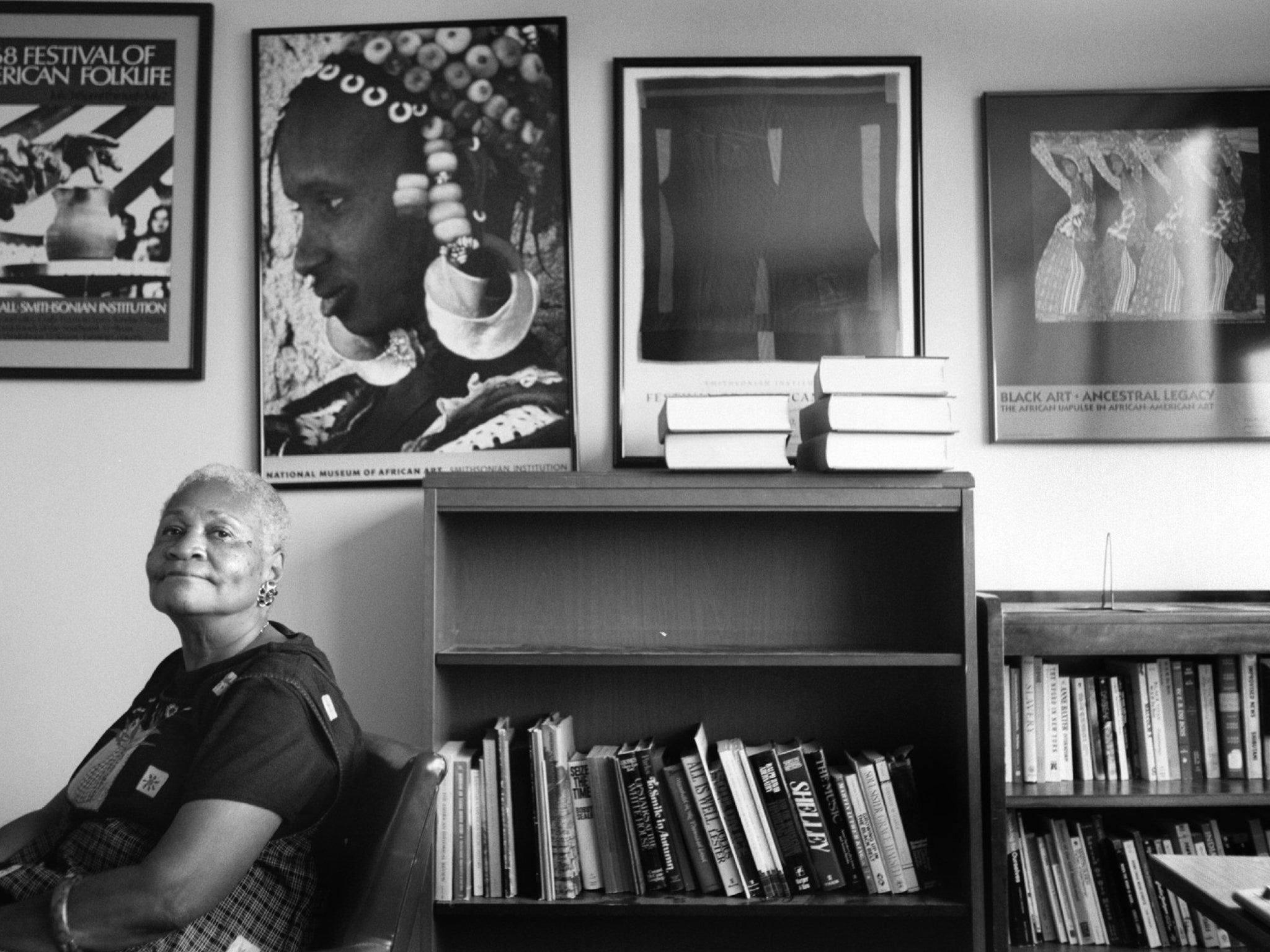Gladys-Marie Fry: Folklorist of black America who investigated the 'night rider' phenomenon and the quilt-making of slaves
Her book on slave quilting began with a quest to learn more about her great-great-grandmother, who had been a slave in Arkansas

Your support helps us to tell the story
From reproductive rights to climate change to Big Tech, The Independent is on the ground when the story is developing. Whether it's investigating the financials of Elon Musk's pro-Trump PAC or producing our latest documentary, 'The A Word', which shines a light on the American women fighting for reproductive rights, we know how important it is to parse out the facts from the messaging.
At such a critical moment in US history, we need reporters on the ground. Your donation allows us to keep sending journalists to speak to both sides of the story.
The Independent is trusted by Americans across the entire political spectrum. And unlike many other quality news outlets, we choose not to lock Americans out of our reporting and analysis with paywalls. We believe quality journalism should be available to everyone, paid for by those who can afford it.
Your support makes all the difference.Gladys-Marie Fry was a folklorist who wrote books and curated exhibits on slaves’ quilting in the pre-Civil War South and the role of white supremacist “night riders” in the story-telling traditions of black culture. She spent 30 years at the University of Maryland and became a professor of folklore and English, retiring in 2000. She was the author of Night Riders in Black Folk History (1975) and Stitched from the Soul: Slave Quilts from the Antebellum South (1990).
She began the research that led to the book on night riders with an inquiry into the stories passed down over generations of what life was like under slavery and in the decades that followed. “This night rider theme kept coming up,” she said in 1974. The night rider phenomenon was a terror strategy sponsored by whites to suppress and control nocturnal mobility by slaves before and after emancipation. Tactics included vigilante violence, fostering a belief and fear of supernatural evil spirits, and warnings that being out at night meant exposure to the risk of being kidnapped and murdered by “night doctors”, who sought corpses to sell for medical experiments.
Her book on slave quilting began with a quest to learn more about her great-great-grandmother, who had been a slave in Arkansas. But the scope of the undertaking grew to encompass a national search for the likes of woven coverlets, counterpanes, rag rugs and crocheted artifacts, all produced by slave women and men.
Fry stressed the essence of family legend and cultural mythology in the search for historical truth, said Cheryl Janifer LaRoche, an anthropologist and a former student of Fry’s. “She taught me to appreciate the power of one person’s story.”
BART BARNES
Gladys-Marie Fry, historian: born Washington 6 April 1931; married Jim Knox (marriage dissolved); died Silver Spring, Maryland 7 November 2015.
© The Washington Post
Join our commenting forum
Join thought-provoking conversations, follow other Independent readers and see their replies
Comments